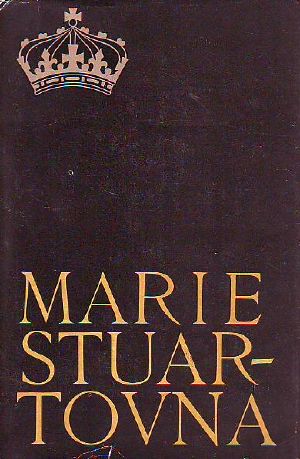Marie Stuartovna

Queen of Scotland and the Isles By Stefan Zweig. Originally published in 1935. Foreword: The clear, the manifest, is self-explanatory but mystery is a spur to creative imagination. Always, therefore, figures and events that are shrouded in mystery demand elucidation and stimulate the ingenuity of the artistic mind Among historical problems that call unceasingly for solution, the tragedy of Mary Stuart ranks as a crucial instance. Surely of all the women who have made their mark in the world, no other has been the theme of so many dramas, novels, biographies, and discussions. Throughout four centuries she has allured poets and tor mented the fancy of men of learning. Still, today, her story has again and again to be retold. Because that which is confused craves for clarity, that which is in darkness strains towards the light. The answers to the riddle of Marys life and character are almost as contradictory as they are manifold. Some regard her as a murderess, others as a martyr some as an intriguer, others as a saint. The diver sity of opinions about this woman is due, not to a shortage of material but to the perplexing superabundance of contemporary records. In the thousands upon thousands of documents, reports, records of trials, letters, etc., relating to her, the question of her guilt or innocence Is continually being re-examined, and the re-trial has continued for three centuries. The more meticulously we scrutinize the documents, the more painfully do we become aware how dubious is the authenticity of historical evidence, and how untrustworthy therefore the con elusions of historians. For no matter how mcontestably genuine an ancient document may be, this genuineness does not provide any guarantee as to the human validity of its contents. In the of Mary Queen of Scots more plainly perhaps than in any other do we become aware how diversely two or more observers may describe an incident which they have witnessed simultaneously Every well-attested it quot Yes is countered by an equally quot f by a rebuttal Falsehood and truth, fact and arc so mingled, that every possible view as to her or this or that matter is concerned and as to her in Darnley s murder, seems equally by When, over and above this conflict of evidence, we to for the partisanship of politicians and patriots, our as tie value of the picture that emerges Is yet In any case It Is but natural for to lake acters, ideas, and outlooks are contrasted so few, i any, can avoid the temptation of one and the other wrong, one guilty and the other If, as lit the Instance, the witnesses belong to one or of the parties, religions, or philosophies, we bias to be a of course. Speaking generally, we find the blame to Mary, and CathoMc ones the to lish historians tend to describe the former as a ess, whilst Scottish authorities Incline to her and to of her as a victim of calumny The of tme the Casket Letters the thorniest problem the as the members of the other faction arc no less that these epistles must have The of extends Into the most trivial details of the life It Is perhaps easier for one who is am nor a to an unbiased judgment upon for one blood begins to course more swiftly when they tip for tion easler for him to contemplate with which Is at one and the same time and Trae it would be over-bold even for a foreigner to he was capable of learning the truth, the whole truth, and but lie truth about Mary Smart s life...